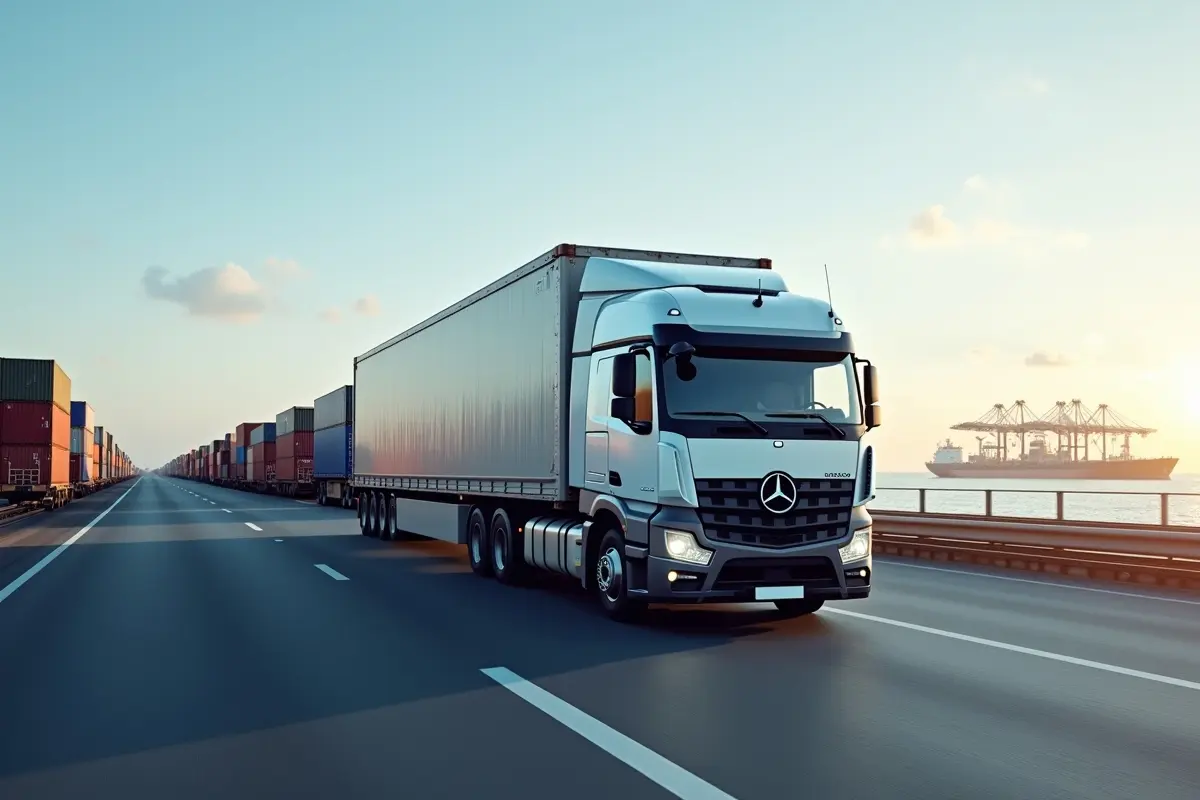
Dry Van Trucking vs. Other Modes of Freight Transport: What to Know
Freight transport is the lifeblood of global commerce. From the food we eat to the electronics we use, nearly everything has been transported at some point. For businesses, choosing the right mode of freight transport is crucial to efficiency, cost management, and customer satisfaction. Dry van trucking is one of the most popular methods for shipping goods, but how does it stack up against other options like flatbed trucks, refrigerated trucks, rail, and sea freight?
Whether you’re a logistics professional or a business owner looking to move goods, understanding the key differences between dry van trucking and other freight transport modes can give you a competitive edge.
What is Dry Van Trucking?
Dry van trucking involves the use of enclosed trailers to transport goods. These trailers are the large, rectangular boxes you see attached to semi-trucks on highways. The “dry” in dry van means that the trailer is not climate-controlled; it’s designed to keep products dry and protected from the elements but isn’t meant for temperature-sensitive goods. The items are loaded in the trailer, sealed, and delivered to their destination with minimal handling along the way.
Why dry van trucking is so popular:
- Versatile – Dry vans can haul a wide variety of goods, from non-perishable food to clothing and electronics.
- Secure – The enclosed trailer adds a layer of protection, reducing the risk of theft and damage.
- Widely available – Since it’s one of the most common forms of freight transport, finding a dry van service is typically easy and cost-effective.
Comparing Dry Van Trucking to Other Freight Transport Modes
Now, let’s see how dry van trucking compares to other common freight transport modes like flatbed trucking, refrigerated trucking, rail, and sea freight.
Dry Van Trucking vs. Flatbed Trucking
Flatbed trucks have open trailers, which make them ideal for transporting oversized or irregularly shaped items like construction materials, machinery, or large equipment. The lack of walls and roof allows for easy loading and unloading from all sides, but this openness also exposes goods to the weather and increases the risk of theft.
Key Differences:
- Protection – Dry vans offer full protection from weather, while flatbeds do not.
- Cargo type – Dry vans are great for boxed and palletized goods, while flatbeds handle items that can’t fit into a standard box or crate.
- Loading flexibility – Flatbeds allow loading from any direction, making them a go-to for oversized items that need cranes or forklifts.
If your cargo needs weather protection or fits within the dimensions of a dry van, dry van trucking is your go-to option. But for oversized or unusually shaped cargo, flatbed trucking might be your best bet.
Dry Van Trucking vs. Refrigerated Trucking
Refrigerated trucking, also known as reefer trucking, is essential for goods that need to be kept at a specific temperature. Perishable items like food, pharmaceuticals, and certain chemicals often require climate-controlled trailers to ensure product integrity during transit.
Key Differences:
- Temperature control – Reefer trucks can maintain specific temperature settings, while dry vans cannot.
- Product types – If your product is temperature-sensitive, you’ll need refrigerated transport. Otherwise, dry vans are often more affordable.
- Cost – Refrigerated trucking tends to be more expensive due to the specialized equipment and energy required to maintain the temperature.
So, if you’re shipping items like fresh produce or medical supplies, you’ll need to pay a premium for refrigerated trucking. Dry vans, however, will be more cost-effective if climate control isn’t necessary.
Dry Van Trucking vs. Rail Transport
Rail transport is a popular choice for moving large quantities of goods over long distances. Trains can haul hundreds of containers, making it a cost-efficient method for heavy and bulky shipments. However, rail transport is typically slower and less flexible than trucking.
Key Differences:
- Speed – Dry van trucking is generally faster for shorter distances, offering direct delivery to your door. Rail is slower, but efficient for large volumes over long distances.
- Cost – Rail transport can be more economical for bulk shipments, but it lacks the flexibility of trucking for door-to-door service.
- Flexibility – Dry van trucking can access more locations, while rail is limited to fixed routes and terminals.
If speed and door-to-door service are priorities, dry van trucking wins. But for bulk shipments over long distances, rail could be the better option.
Dry Van Trucking vs. Sea Freight
Sea freight is the king of international shipping, moving massive amounts of goods between countries at a lower cost than air freight. However, it’s also slower and comes with its own challenges, like port delays and customs clearance.
Key Differences:
- Distance – Dry van trucking is perfect for domestic shipments, while sea freight is best for international cargo.
- Speed – Sea freight is significantly slower than trucking, often taking weeks or months, depending on the distance.
- Cost – Sea freight is more cost-effective for large, international shipments, but for local or national transport, dry van trucking is more practical.
When shipping internationally, sea freight dominates. But for domestic or regional shipping, dry van trucking offers the speed and convenience that sea freight simply can’t match.
When to Choose Dry Van Trucking
So, when should you choose dry van trucking over other modes of transport?
- Versatility – Dry vans are ideal if you’re shipping a variety of goods that don’t require temperature control or special handling.
- Protection – The enclosed trailer offers superior protection against the weather and theft.
- Availability – Dry van trucking is one of the most accessible and cost-effective options, making it a go-to choice for many businesses.
If your shipment is relatively straightforward—like pallets of consumer goods, non-perishables, or industrial supplies—dry van trucking is a solid choice. But if your cargo has special requirements, you might need to explore other options.
Final Thoughts: The Right Mode for Your Freight
Freight transport isn’t a one-size-fits-all decision. Dry van trucking is a fantastic option for many types of shipments, but it’s not the only solution out there. By understanding how it compares to flatbed trucking, refrigerated trucking, rail transport, and sea freight, you’ll be better equipped to choose the best mode for your needs.
Every business has unique requirements, and the key to efficient logistics is matching those requirements with the right transport mode. Whether you’re shipping across town or across the globe, knowing your options helps ensure your goods arrive on time, intact, and on budget.

